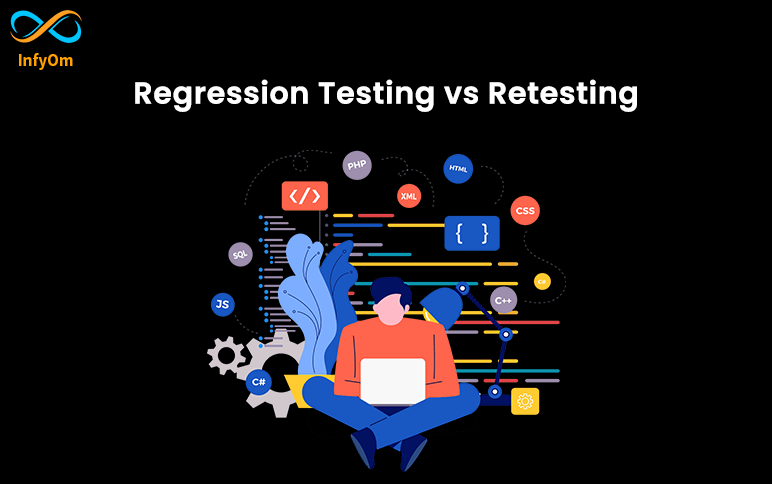In this article, We will see the difference between regression testing vs retesting.
The concepts of regression testing and retesting are generally confused within the field of test automation. They sound similar and they have correlations too.
The main difference is that regression testing is designed to test or verify for bugs you don’t expect to be there. Retesting is designed to test or verify for bugs you do expect to be there.
What is Regression Testing?
Regression testing is a type of software testing executed to check whether a code change has not critically disturbed the current functions & features of an application/software, what does it mean that the point of regression testing is to make sure that new updates or features added/release to software don’t break any previously released updates or features or functions.
What is Retesting?
Retesting is done to ensure that the bug is fixed and even if failed functionality is working fine or not, this is a kind of verification process followed in the testing field for the fixed bugs. Most of the testers having confused with Regression and Retesting.
Boost Customer Satisfaction, Find out Hidden Bugs In Your Software.
Generally, testers find bugs while testing the software application or website and assign them to the developers to fix them. Then the developers fix the bug and assign it back to the testers/QA for verification. This continuous process is called Retesting.
Difference between Regression Testing and Retesting
We could say that regression testing is a type of retesting. Retesting really means testing something again. And when we are regression testing, we are testing something that we have tested numerous times before.
But determining what the two have in common or similar might confuse more than it will help. So, for the well-being of clarity, below is an overview of the key differences.
Regression Testing Vs Retesting
| Regression Testing | Retesting |
|---|---|
| Regression Testing is carried out to establish whether a recent program or code change has not negatively affected existing features. | Re-testing is carried out to establish the test cases that failed in the final execution are passing after the defects are fixed. |
| The purpose of Regression Testing is that new code fixes should not have any side effects on existing functionalities. | Re-testing is performed on the basis of the defect fixes. |
| Regression Testing can be carried out parallel with Re-testing, based on the project and availability of resources. | Retesting is carried out before regression testing because the priority of re-testing is higher than regression testing. |
| Defect verification is not part of regression testing. | Defect verification is part of re-testing. |
| Regression testing is known as genetic testing. | Re-testing is planned to test. |
| Regression testing is executed for passed test cases. | Retesting is executed for failed test cases only. |
| Regression testing checks for unexpected side effects. | Re-testing ensures that the original fault has been corrected. |
| Regression testing is only done when there are any modifications or fixes become mandatory in an existing project. | Re-testing executes a defect with the same data in the same environment with different inputs with a new build. |
| We can do automation for regression testing; Manual testing could be time-consuming and expensive. | We can’t automate the test cases for retesting. |
| Test cases for regression testing can be captured from the functional specification, user manuals and tutorials, and defect reports in regard to corrected problems. | Test cases for retesting cannot be captured before starting testing. |
Conclusion:
In case you are still confused, it may be easier to think of retesting as checking to see whether the bug actually fixed and regression testing as whether you created any new bugs with your fix. While you may identify regression issues during a retest, they are in fact separate and should be treated as distinct forms of testing.



